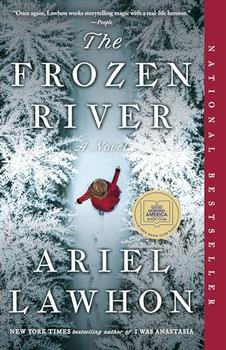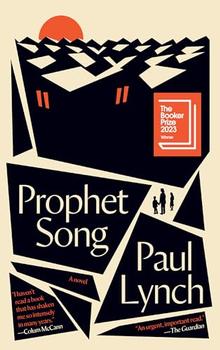Book Club Discussion Questions
Want to participate in our book club? Join BookBrowse and get free books to discuss!
Please be aware that this discussion guide will contain spoilers!
-
Early on, Shiva considers the role of the messenger: "Even as a kid, she'd somehow understood: the Messenger was at once the one who haunted the story and also the one who'd managed to catch the haunting in story form, to tame it as though with a butterfly net" (pp. 20-21). How does the presence of the messenger braid together the various stories at play across space and time, New York to Maryland to Warsaw to Ropshitz, in City of Laughter? Catch the haunting? Tame it as though with a butterfly net? What do you make of the narrator? How they change shape throughout the story?
-
The concept of the census appears consistently throughout Jewish texts: in Numbers, a census of the Jews in the desert; in Exodus, a census for the sake of collecting materials for the building of the golden calf. An-sky's anthropological survey is not a divergence, but a continuation of this tradition of taking stock of people. What role does the census play in our understanding of history? How does this story keep track of people? What is Shiva's orientation to the census, and how does this historical and spiritual tool relate to her research? How might An-sky's leading anthropological questions relate to Shiva's exploration of her family history?
-
What is the relationship between the sad and joyous in City of Laughter? What might the story of Baruch, of the legacy of the badchan, reveal about this dynamic?
-
Abraham ibn Ezra described dybbuks as a product of the interaction of sunlight with smoke and vapor, or a kind of weather on a very micro level. Both Mira and Shiva's births were accompanied by otherworldly weather events. How might this relate to the idea of the dybbuk as a physical form of intergenerational trauma? What can it explain about generational stories, the pain and love that passes across generations? What haunts this family?
-
Syl, Hannah, Mira, and Shiva all experience profound loneliness. How does loneliness square with laughter in City of Laughter? What does loneliness mean for each of these characters? How does loneliness relate to the sky, to the weather, to the depth of their relationships to history, story, and prayer? How is loneliness different from sadness?
-
What does this story offer us about diaspora? How might El's moving spotlight theory (p. 282) serve as a framework for stories that reach across time and space? How might the vertical line, or the void, or the core, serve as a lens through which to understand lineage?
-
Sometimes the weather knows things. Professor Mel Rosen talks about dead people in the present tense. Religion takes the form of magic for Syl, and sometimes for Hannah. How do you understand the different modes of knowledge presented throughout the book? What might that reveal about your assumptions, your relationship to truth, or your ways of seeing and ordering the world?
-
Shadows and darkness appear again and again throughout City of Laughter, in the form of secrets (Syl's notebooks), weather (the sky changing), and a sadness that weighs the characters down. At the very start of the book, Shiva thinks about darkness: "Shiva felt like the thing she was always looking for, the thing that would help her understand herself, was not a thing at all but a nothing" (p. 9). What can nothingness reveal to us? What lies in the darkness in this story? Who faces it, and who turns away from it?
-
For Shiva, "Femme meant more ... It meant sartorial power and aesthetic largesse; it meant volume and texture. It meant hyperbole and gossip and bighearted intimate friendship and steamy low-lidded backroom flirtation ... It meant abundance" (pp. 70-71). Shiva's femme identity is foundational to her experience as a queer person in the world. How does her relationship to femmeness inform Shiva's desires and choices, specifically as a queer character? How do femme sensibilities shape the inheritances and legacies of the women of City of Laughter, and inform the world of the book more broadly?
-
Shiva believes that "a love story [is] the engine at the center of anything" (p. 259). Later, Dalia, the Kreitman scholar, tells her, "Letters are where some of our greatest stories live" (p. 287). How do various modes of correspondence function in this book? How do love stories enact themselves across space and time? How does the domestic relate to the romantic? How does magic relate to love?
-
Paying attention to the weather plays a key role throughout City of Laughter, first when Baruch acknowledges the different weather when no one else does, then when Shiva notices the rain out her window but could easily have not, when Shiva is born, when Mira is born, when Shiva visits Ropshitz, and so on. We see: "The weather was never an accident" (p. 84). What does it mean to witness weather in City of Laughter? How might it map onto some of the other modes of witnessing that happen throughout the book? What might it reveal about these characters?
-
In Jewish folklore, the dybbuk is a destructive, evil spirit that wanders until it finds a suitable home in a human to cling to. The full term is dybbuk me-ruach ra'ah or "a cleavage of an evil spirit," implying that the dybbuk is simply a piece of a larger, perhaps more powerful evil spirit. How might Shiva's orientation to her family history relate to this idea of the dybbuk as a cleavage, as a piece that has been broken off from the evil spirit? Or to Shiva's overwhelming feeling of stuckness at the beginning of the novel? How might this relate to the physical objects that recur throughout the book? Rocks and birds and little figurines?
-
Hannah often turns to the mikveh to "find the ancient kind of privacy you can reach only by opening the door behind a door." And more on immersing: "As you become the water, your witness can offer prayers, blessings, after-thoughts, or, if you prefer, nothing at all" (p. 66). How do these doors relate to the doors that Mira describes closing as she burrows deeper into her sadness (p. 223)? What are Hannah and Shiva drawn to immerse themselves in? Are there parallels between Hannah's mikveh ritual and Shiva's commitment to her research projects? What role does immersing play throughout this novel? What are you drawn to immerse yourself in?
-
Both Hannah and Shiva seem to be searching for something they are unable to articulate at first but begin to uncover as the narrative progresses. The same goes for Mira, and perhaps for Syl as well. How might you describe what it is they are searching for? What might this reveal about their relationships to one another, and to the rest of their family? How might this searching relate to the "choral" feeling Shiva begins to write about towards the end of the book?
-
To what extent does Mira's silence affect the women that come after her in her lineage? How does silence function in this family?
-
Throughout City of Laughter, each character is almost always referred to by their name, and not by their relation to one another. Mira is not Shiva's great-grandmother, or even Syl's mother. Hannah is not Shiva's mother; Syl is not Hannah's mother. What might this choice reveal about how lineage and generations function in this story? How do these women relate to one another?
-
Sadness becomes an inheritance in City of Laughter: "Syl, of course, had the sadness. Mira, it was clear, had the sadness. It was simply an inheritance, the way some families passed down money or heirlooms" (p. 138). What does it mean for sadness to be an inheritance? How does sadness function as a narrative tool throughout the novel? What does sadness reveal? Is there something shining or bright beneath the sadness, as is revealed at times, perhaps through the many buried objects hidden throughout parks and trees in Brooklyn and Ropshitz?
-
Often, the narrator describes people not noticing things that they could or should, especially in shadows out of windows. Darkness becomes a sort of background character throughout the book. The narrator reflects, "The place the laughter led me was dark and quiet" (p. 182). How do nothingness and absence function throughout the novel? Why might recklessness or escape lead to or reveal darkness? What might this tell us about the nature of shadows or darkness? What's on the other side?
-
Hannah tells Shiva that Syl's story doesn't belong to her. The Polish poet and scholar Czeslaw Milosz once said, "When a writer is born into a family, the family is finished." Who gets to lay claim to ancestors? To stories? What does it mean to write about family history?
-
Mirrors and messengers appear throughout the narrative, uncovering secrets and transmitting messages. How do boundaries operate in this book, between the living and the dead, between earth and sky, between the material and the spiritual, the sacred and the profane? What crosses over? How might mirrors and messengers relate to one another? What is the difference between revealing and warning?
-
Curlews, a bird that is notably "impossible to sex" (p. 327) and moves in the collective, come up twice in this book in various story fragments. What valence might this type of bird have on the story?
-
"In the end, the truth is tiny" (p. 181). How do you square the unwieldly images and themes in the book—the recklessness of laughter, powerful weather, the void, the core—with the idea that the truth is tiny? Where might the truth live in this story? What happens when each character goes looking for it?
-
Shiva reflects often in different forms of queer time—her relationship with Dani, how a night with friends feels like an entire world, her brief and vivid online romance, the way time collapses when she's flirting or has a crush, how she meets people in Warsaw who she feels she's known for lifetimes. How does time function throughout this book? What puts it on hold, makes it loop? How do time, history, and spirituality interact with one another?
Unless otherwise stated, this discussion guide is reprinted with the permission of Grove Press. Any page references refer to a USA edition of the book, usually the trade paperback version, and may vary in other editions.




